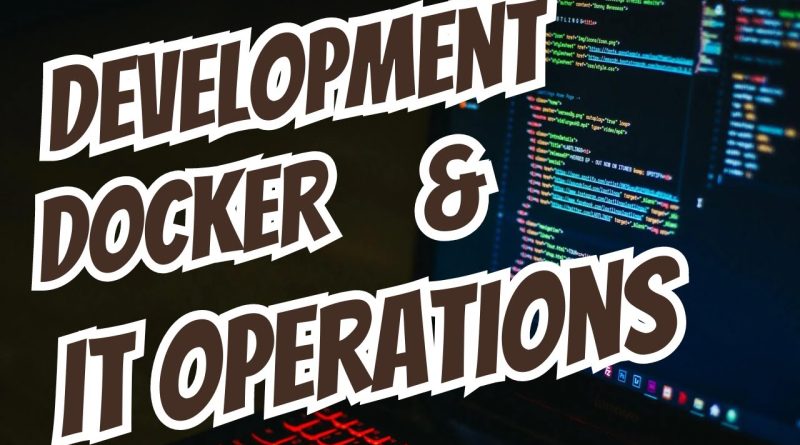(Dev) and IT operations (Ops) You NEED To See! in hindi/urdu for Beginners
DevOps is a set of practices that combines software development (Dev) and IT operations (Ops) to shorten the development lifecycle and deliver high-quality software continuously. It emphasizes collaboration, automation, and integration between developers and IT operations. The primary goal of DevOps is to enhance the speed and reliability of software delivery through a culture of shared responsibility, where development and operations teams work together throughout the entire software lifecycle.
Docker, on the other hand, is a platform that enables developers to create, deploy, and run applications inside lightweight, portable containers. Containers bundle an application and its dependencies, ensuring that it runs consistently across different environments. Docker helps in achieving the objectives of DevOps by facilitating continuous integration and continuous deployment (CI/CD).
DevOps practices involve using tools and technologies to automate and streamline various stages of software development and deployment. Continuous Integration (CI) is a critical aspect where code changes are automatically built and tested, allowing developers to detect issues early. Continuous Delivery (CD) extends CI by automatically deploying code changes to production-like environments for further testing, ensuring the software can be released reliably at any time.
Docker’s role in DevOps is significant as it provides a standardized unit of software that can be easily shared and deployed. Docker images, which are templates for containers, include everything needed to run an application, such as code, runtime, libraries, and configuration files. These images can be stored in Docker registries and pulled to any environment, ensuring consistency from development to production.
To begin using Docker, you first need to install Docker on your system. Once installed, you can create Dockerfiles, which are scripts that define the contents of your Docker images. A Dockerfile specifies the base image, application code, dependencies, and any commands that need to be run to set up the application environment. Building a Docker image from a Dockerfile creates a snapshot of your application that can be used to spin up containers.
Docker Compose is another tool that simplifies the management of multi-container applications. With Docker Compose, you can define and run multi-container Docker applications using a YAML file. This file describes the services, networks, and volumes that your application needs, allowing you to manage the entire application stack with a single command.
As you advance in DevOps and Docker, you will encounter orchestration tools like Kubernetes. Kubernetes is an open-source platform designed to automate deploying, scaling, and operating containerized applications. It provides a framework for running distributed systems resiliently, managing the deployment of containers across clusters of hosts, and scaling them as needed.
Monitoring and logging are crucial components of DevOps. Tools like Prometheus and Grafana are used for monitoring, providing insights into the performance and health of applications. Log management tools like ELK Stack (Elasticsearch, Logstash, Kibana) help in aggregating and analyzing logs from different sources, making it easier to troubleshoot issues.
Security is another essential aspect of DevOps. Implementing security practices throughout the CI/CD pipeline, often referred to as DevSecOps, ensures that security is integrated into every stage of the software development process. This includes using tools for static code analysis, vulnerability scanning, and ensuring that containers are running with the least privileges necessary.
In a DevOps culture, continuous feedback is vital. Feedback loops help in improving processes and products by learning from each deployment and iteration. This culture fosters continuous improvement and adaptability, leading to better software and faster delivery times.
Advanced DevOps practices involve infrastructure as code (IaC), where infrastructure is provisioned and managed using code and automation tools like Terraform and Ansible. This approach allows for consistent and reproducible environments, reducing configuration drift and manual errors.
whatsapp chenal : https://whatsapp.com/channel/0029VafDJYi1nozFfROgtM18
Facebook : https://www.facebook.com/profile.php?id=61553164050621
Our Facebook Page: https://www.facebook.com/profile.php?id=61557077401365
Follow us in Instagram : https://www.instagram.com/iconicbaba123/
Linked-in : https://www.linkedin.com/in/bilal-hassan-5717662b1/
Tiktok : https://www.tiktok.com/@fti_baba
by FTI-BABA
linux dns configuration



